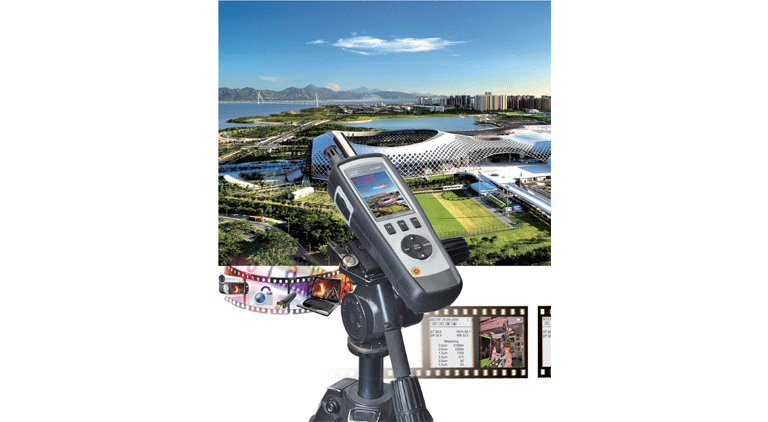Use an Air Particle Counter to know what you breathe
By EPR Magazine Editorial December 12, 2019 3:25 pm IST
By EPR Magazine Editorial December 12, 2019 3:25 pm IST

Air pollution control is important for a variety of industrial environments as well as the workers in these environments, especially those of scientific disciplines. In the fields of medicine, space instrumentation, industrial hygiene, environmental control, chemical warfare and urban air pollution control, there is a common requirement for better instrumentation and labor-saving devices to analyse the contents of air and other gases.
Some of the parameters that are of particular interest in each of these fields, are as follows:
In all of these fields, a Particle Counter can measure the diameter and number of particles in the air with the least expenditure of time and materials and with greater accuracy than can be obtained by any other method. The particles may be either droplets of fluid or particles of solids.
Particle Size Range is of Interest
The size of a particle is its most important characteristic. Workers in each field are concerned with particles in a particular size range because of the effects that they can have on our health and upon the quality of the products manufactured in our factories. In some clean rooms, the mechanical tolerances of fine machinery dictate the size of the smallest size of particle that can be allowed in the air.
For example, if a bearing has a tolerance of 0.001 inch, particles with diameter of 0.0005 inch might degrade the bearing. Accordingly, filters in the clean room assembly area might be designed to exclude particles with a diameter of 0.0005 inch and larger (roughly 10 microns). In medicine, the size of particular bacteria is known and the worker may wish to count the number of particles of this particular size.
The surface area and total concentration of particles becomes most important where there is a possibility of a dust explosion. The size of a particle determines the settling velocity, that is, the rate at which the particle will fall in still air. This settling velocity also gives an indication of the possibility that the particle may be reintrained by high velocity air flow.
The amount of chemical contamination that can be expected from a particle is related to its particle size. In this respect, it does well to remember that a 10-micron particle has a volume that is 1000 times larger than a one-micron particle. Sometimes, the performance of a mechanical filter dictates the size range. Then, the effect of high particle concentrations on filter loading may be of particular concern.
Often the production of particles of a uniform size may be desired. When manufacturing magnetic tape and rocket fuel, many advantages can be obtained by producing particles with a uniform size. These dry particles can be dispersed in an aerosol, and quickly measured with a particle counter to determine the particle size distribution.
The importance of a numerical particle count
All aerosols have a history. The number of particles in a sample of air varies from time to time, but there will almost always be a considerable number present in any sample of air. Various sources of air pollution add to this background particle count and filters and precipitators may be used to subtract particles from it.
The number of particles present in a sample of air is often a function of changes in the wind velocity and weather conditions. In some cases, particles may grow larger in an aerosol due to photochemical action, possibly as the direct result of high concentration of NO2 in the air from automobile exhausts. Many solid particles enter the air with flue gases. Vapor containing liquid particles can come from the sea or many industrial processes.
The CEM Air Particle Counter with unique built-in camera for capturing videos and photos that are stored onto internal memory or a microSD card. The instrument simultaneously measures and displays 6 channels of particle sizes (down to 0.3 µm), air temperature, humidity, dew point and wet Bulb. The Model DT-9881 also measures CO and HCHO concentrations in air. It has a 2.8” TFT Color LCD display with Built-in 320×240-pixel camera takes videos (3GP) (DT-9881 only) and photo images (JPEG) and records them in internal 74MB memory. It stores 5000 records (date, time, counts, humidity, temperature, sample volumes, and location label) and 20 minutes of video. It has selectable sample time, count data, and programmable delay. Max, min, DIF, AVG record, date/time setup controls, Auto power off and mini-USB port connection is also provided. The included software generates reports with videos, photos, and data points.
The CEM Air Particle Counter and other CEM Environmental Testers can be ordered directly from CEM’s office at Kolkata, their website www.cem-instruments.in and Amazon.in.
For details contact:
info@cem-instruments.in
We use cookies to personalize your experience. By continuing to visit this website you agree to our Terms & Conditions, Privacy Policy and Cookie Policy.